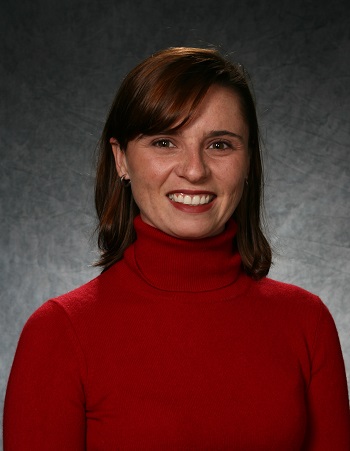
SMITHFIELD, RI – A group of researchers, led by Heather Lacey, Ph.D., Professor of Psychology at Bryant University, collaborated to examine how people interpret and respond to risk. The article, “What if I am the one? Measuring individual differences in emotional sensitivity to probability and emotional reactivity to possibility,” was published in the Journal of Behavioral Decision Making, released online June 1, 2020, with co-authors Steven C. Lacey (Carroll School of Management, Boston College), Laura D. Scherer (Department of Medicine, Division of Cardiology, University of Colorado, Denver), and Brian J. Zikmund-Fisher (Department of Health Behavior and Health Education and Department of Internal Medicine, University of Michigan).
The results of this study are particularly relevant at a time when reactions and behavior related to COVID-19 risk vary widely. We asked Professor Lacey about her work and how this research might help leaders and the public navigate the challenges of the current pandemic.
What led you to explore this topic of perception and decision making?
Leading up to this study, we were seeing cases of people who just didn’t seem to react much to probability information, feeling as much worry about, say, a 1 in a million risk as a 1 in 10 risk. Those should arguably feel very different, but some people seem to focus more on the mere possibility of being that one unlucky case, regardless of how rare that one case is. We wanted to better understand those differences and see how they predict people’s reactions to risky situations.
What is the Possibility Probability Questionnaire (PPQ) measure and what did it tell you?
We developed a measure called the “Possibility Probability Questionnaire” designed to quantify people’s emotional sensitivity to probability. We gave participants a series of risks to consider, each with different probabilities (e.g., 1 in 10 million, 1 in 10, etc.), and calculated how their emotional responses changed with the probabilities.
Some people are pretty indifferent to the probabilities, responding similarly to everything, and other people calibrate to the probabilities, worrying less about extremely rare risks and worrying more about more likely risks. We then used this measure (and other standardized measures) to model reactions to hypothetical health risk situations (e.g., finding asbestos in the home, drinking alcohol during pregnancy), and we found that our PPQ measure is a good predictor of how concerned people feel about those situations.
How does this research relate to current COVID-19 data and risk perceptions?
Right now, people are being bombarded with statistical information about COVID-19, watching the numbers unfold in real time, and they’re struggling to make sense of these numbers and interpret their personal risk. Our findings show that risk numbers mean different things to different people, and maybe that can help explain some of the different reactions we are seeing, with some people worried and cautiously maintaining social distance and others concluding that the risk is overblown and over-hyped.
Can your research help leaders promote public health and safety?
Better understanding of people’s interpretation of risk is important for public health communication. Convincing people to engage in preventative behaviors, whether it’s handwashing and mask-wearing or something else, depends on convincing them that it’s necessary and helpful. For some people, the statistical risk information may be convincing, but if we can identify individuals who just don’t respond to those numbers, we can tailor a different kind of message that might be more effective for them.
What can individuals and communities take away from this that might help people better navigate through this pandemic?
As communities start to reopen, we are seeing painful social divides. People are starting to interact again, and those interactions can get tense as people with different perceptions of risk try to figure out how to behave around each other. People are judging each other for being too cautious or for not being cautious enough. Maybe it’s helpful for us to understand how others’ risk perceptions differ from our own. Maybe that will help us all be patient and compassionate with each other and ease the social pressures, giving us all a little more room to find our comfort level as we enter this new version of normal life.
RELATED ARTICLES